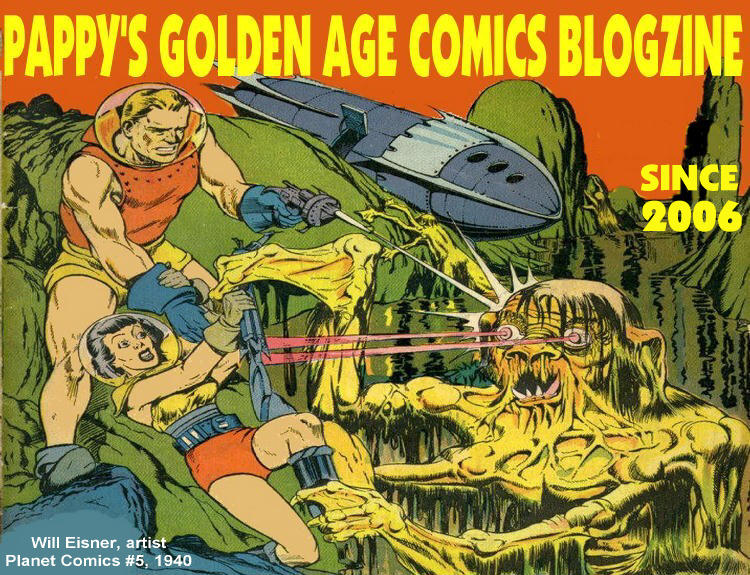
Number 156
Getting Graphic
It Rhymes With Lust from 1950 is widely considered as the first of what we now call graphic novels. It was published by St. John, written by Arnold Drake and Lesley Waller under the pseudonym of Drake Waller, and drawn by one of the star artists of the golden age, Matt Baker.
Not so well known is the follow-up to this experiment in "Picture Novels," The Case Of The Winking Buddha by Manning Lee Stokes, illustrated by Charles Raab. I found a stack of these at my druggist. They sat near the magazines for a couple of months before I finally gave in and bought one. I wasn't all that impressed with it and it ended up in a box with other oddball items from my collection.
I should qualify it: It Rhymes With Lust would be the first American graphic novel. In December, 1969, I found the Tintin graphic novel, Explorers On The Moon, on a bargain table at a department store, and picked it up for under a dollar. It was the edition published by Western Publishing, also publishers of Gold Key Comics.

When I read it I wasn't all that impressed by the 1954 story, which is hackneyed, but I loved the format. When this was originally published in America in 1960 I don't think people were ready or willing to pay $1.95 for what looked like a comic book, even one in a more deluxe format. A few years later when Asterix found his way to America and Tintin was available again comics had gained more acceptance as acceptable literature for adults and even for children, and parents were more willing to pay the price for a more quality book.
In the early 1970s, thanks to the Graphic Story Bookshop in Culver City, California, I was able to pick up some really great graphic novels, Valerian, Lone Sloane, and this book by Greg and Hermann, part of their Bernard Prince series. I am still knocked out by the dynamic art, and wonder if it has ever been reprinted in English.


 At that time in the early 1970s I expected American comics to collapse at any moment; distribution channels were disappearing. Less stores were willing to sell comics because they were a nuisance. They cost 15¢ with low profitability, kids stood around and read them without buying, and they took up valuable display space.
At that time in the early 1970s I expected American comics to collapse at any moment; distribution channels were disappearing. Less stores were willing to sell comics because they were a nuisance. They cost 15¢ with low profitability, kids stood around and read them without buying, and they took up valuable display space.Just before the independent comic book stores took up the slack it looked like comic books as we had known them since the 1930s would be gone. The French had anthology comics coming out every week with serial chapters, printed on slick paper with beautiful coloring, and were then collecting the serials into graphic novels. When I saw the French graphic novels I thought, wouldn't this be a great idea! Legitimize them, collect comics into these deluxe format books. But naw, this is America…readers expect a cheap product and won't pay more for a comic book. Another example of my lack of foresight.
I notice now that most bookstores devote a whole section to graphic novels, and especially manga. I see something I haven't seen in years: I see kids, usually teenagers, sitting in bookstores actually reading them. I hope some of them are buying them as well. Manga seems really popular with young people. I'm not a manga fan, but around the time I bought the books from Graphic Story Bookshop I also bought a couple of Japanese "graphic novels," reprints from their original comic books. This is my favorite. Isn't it the character we Americans know as Gigantor, who had a TV cartoons series a la Astro Boy and Speed Racer, in the mid-1960s?

I don't like all graphic novels, but there is enough variety to insure I can find something I like.
America's comic heritage is exceptionally rich, but it has been people from other countries who have paved the way and shown us that heritage shouldn't just be left to rot in cheap, disposable formats. Which reminds me: has anyone ever given the Pogo reprint books of the 1950s the credit they deserve as graphic novels? Yes, they were collections of daily comic strips, but edited and composed so as to make a "novel." They were sold for a dollar and even at that price were successful beyond anyone's expectations.


No comments:
Post a Comment